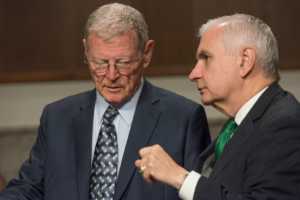
The Senate Armed Services Committee added $45 billion to the topline in its version of the next defense policy bill, while the House Armed Services Committee has proposed authorizing spending for fiscal year 2023 that largely matches the president’s budget request. SASC voted 23 to 3 on Thursday to advance its $847 billion mark of the FY ‘23 National Defense Authorization Act (NDAA), while HASC's bill supports an $802.4 billion topline, according to a copy obtained by Defense Daily. “I…

 By
By 











